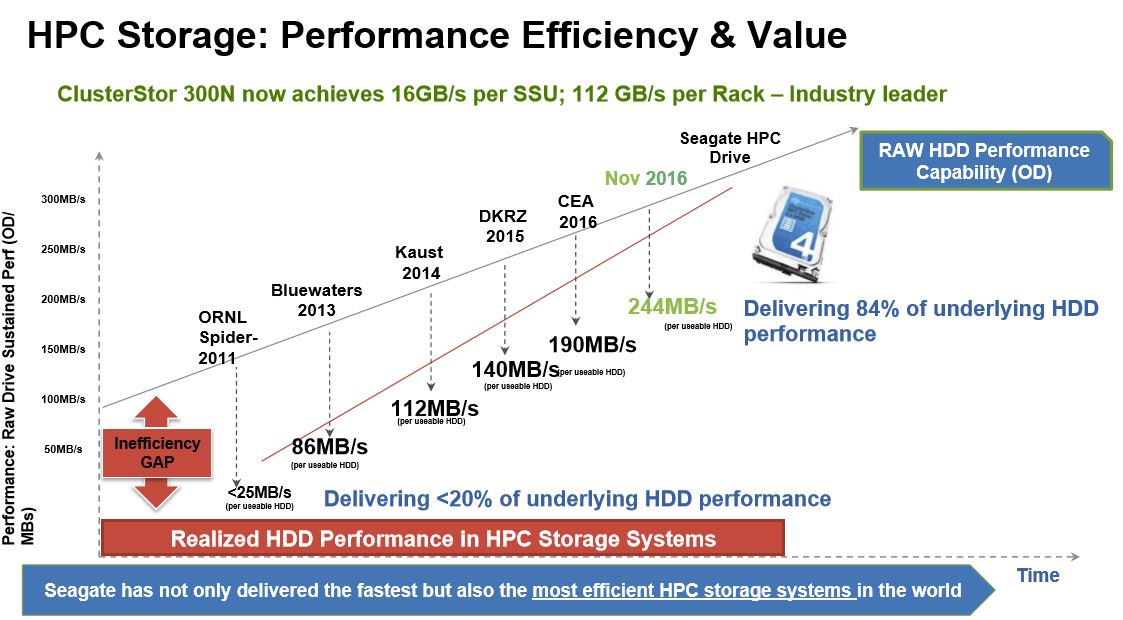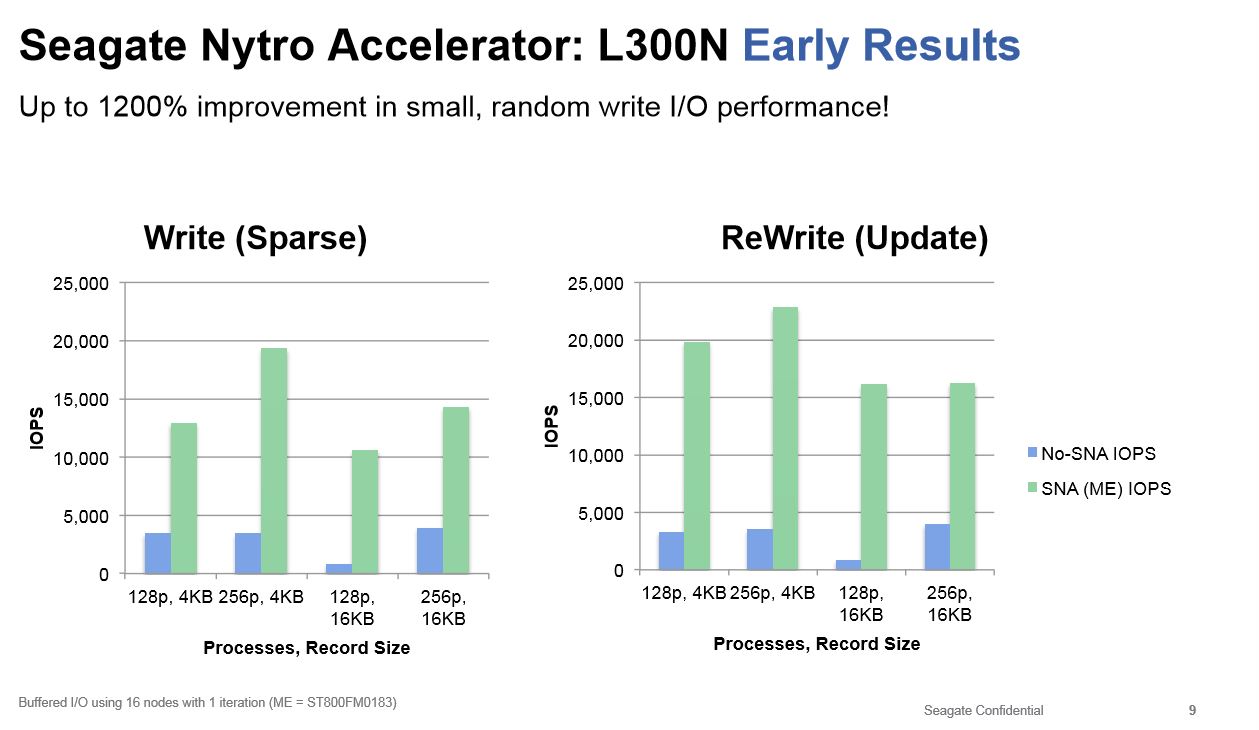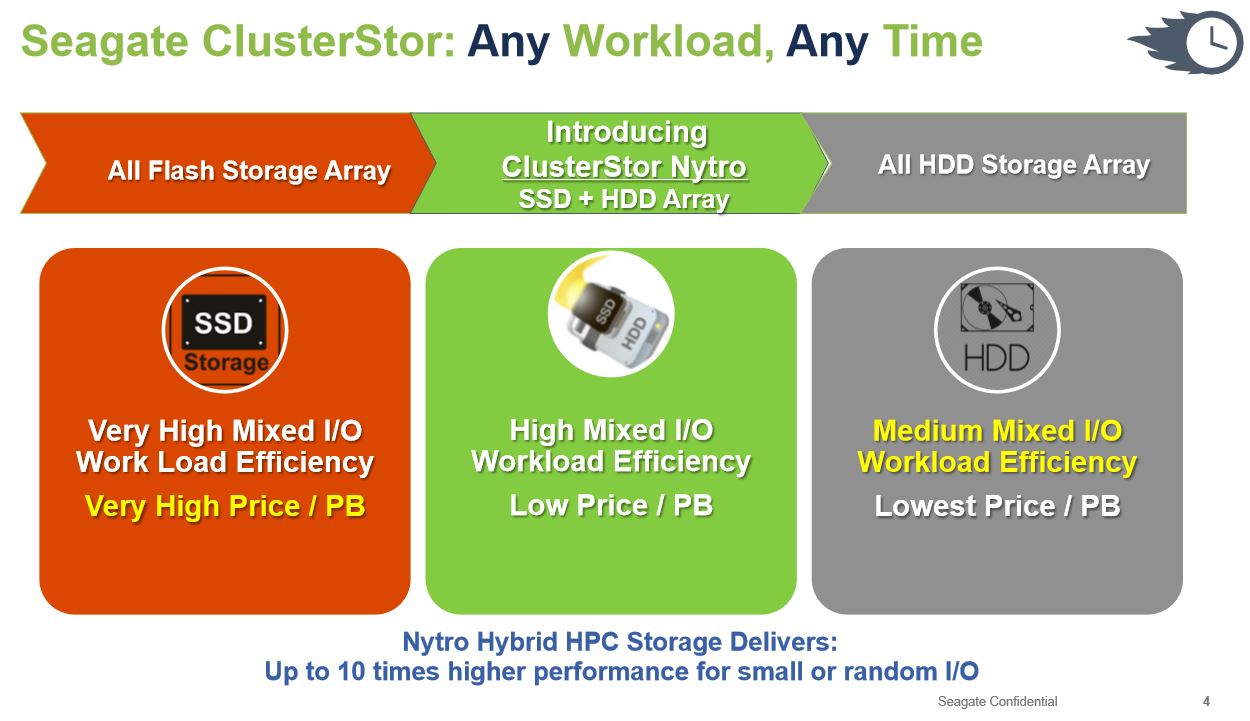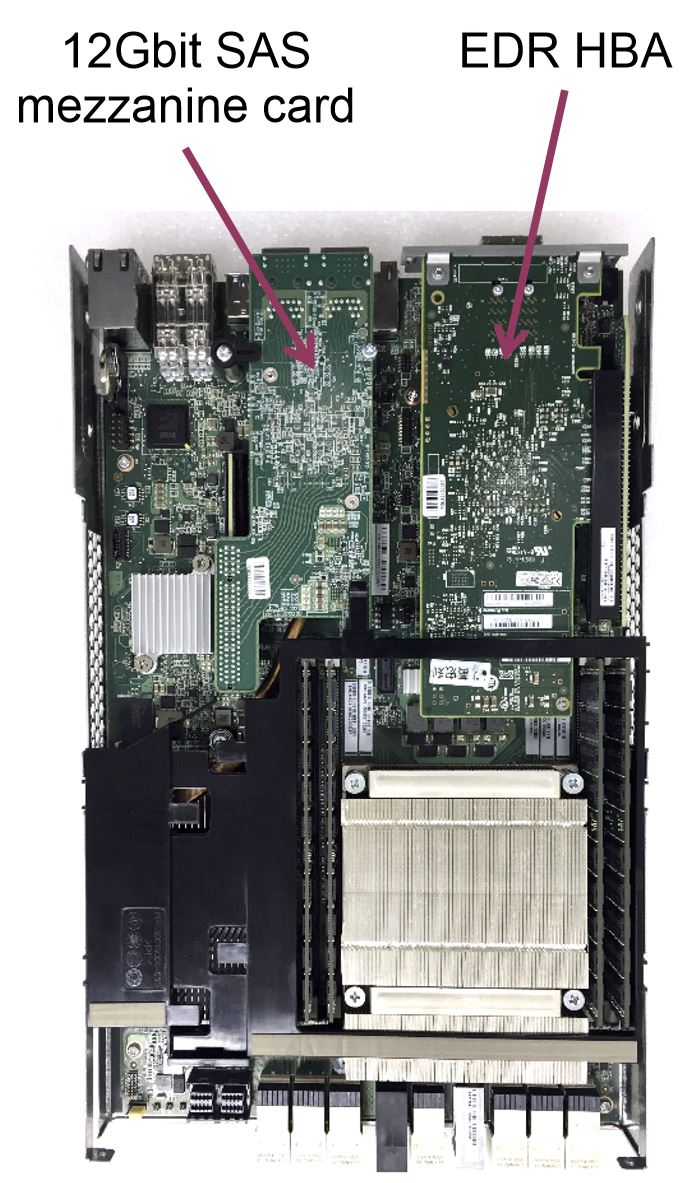Seagate Smashes Burst Buffers With ClusterStor 300N
The supercomputing world is full of multi-million, and sometimes multi-billion, dollar compute clusters that feature the most powerful compute capabilities on the planet. Often, orchestrating tens of thousands of CPUs, GPUs, Knights Landing or FPGAs working in concert across a bleeding-edge networking infrastructure all comes to a crashing halt due to the ever-present nemesis of primary storage.
Seagate announced the ClusterStor 300N at Supercomputing 2016 as its solution to the storage bottleneck. The first step to jumping the storage hurdle is to employ the correct high-performance file system, so Seagate offers the Lustre parallel distributed file system and Spectrum Scale (licensed GPFS Global Parallel File System from IBM), which are two of the most popular HPC filesystems.
However, the hardware is the big change to the ClusterStor 300N equation. Supercomputers require massive bursts of data either to or from the compute cluster during normal operations (up to and beyond 100GB/s), such as during a checkpointing operation, which easily overwhelms the primary storage system. The data bursts are transitory in nature, and building the entire storage system to handle the speed of the bursts increases costs dramatically, which isn't the best solution when data bursts only occur for a small fraction of the operating time.
Burst buffers are the most common solution. A burst buffer is a dedicated intermediary appliance packed to the gills with RAM and flash technology that sets between the compute cluster and primary storage. The burst buffer absorbs the overwhelming and short-lived bursts and then flushes the data to the HDD layer at its leisure. The buffer removes any performance penalties from the slow disk-based storage and negates the need to upgrade the entire storage subsystem, and while it adds cost, it's always more cost-effective than upgrading the entire system. Many burst buffers start in the $500,000 range and move up from there, and they also require proprietary agents running on the compute cluster, which steals cycles. Some also require specialized non-POSIX compliant file systems.
Seagate's answer is to utilize some of the tools from its LSI acquisition, which brought in much-needed flash technology. The company gave its Nytro series, which we recently reviewed, a makeover and embedded it into the storage controller, but the key concept of flash-based acceleration remains the same. The system uses up to 3.2TB Seagate Nytro Accelerators and a combination of its caching software (a newer evolution of the LSI CacheCade technology), which transparently directs data to the correct location. The software directs incoming large-block data, which HDDs can handle, to the HDD pool. The SSD absorbs small-block random, mixed, or unaligned data for faster performance. Much like a burst buffer, the Nytro Accelerators flush the data sequentially--which boosts performance--to the HDDs. The caching software is transparent and works without any changes to the host or filesystem.
The result is up to a (claimed) 1,200% improvement with small random write data, and Seagate also upgraded the metadata manager to support a doubled 100,000 file creations per second.




Being an HDD vendor, one would expect Seagate to make improvements upon the underlying HDD resource, which it has. The company upgraded to 12Gbps SAS controllers and also employs its latest SMR HDDs, which help increase density and reduce cost. Substandard performance scaling is one of the primary challenges for en masse HDD deployments, but Seagate provided a chart that claims it provides up to 84% of the performance of the underlying HDDs, which is impressive. Seagate also notes the ClusterStor 300N offers up to 112GBps of throughput per rack.
Get Tom's Hardware's best news and in-depth reviews, straight to your inbox.
SMR HDDs do have performance limitations, particularly with random data, but Seagate noted it defrays that with system-level data management techniques, and a dollop of flash goes a long way to addressing small random I/O for the hybrid and all-flash configurations.
The ClusterStor series comes in all-flash variants, which are the most expensive; hybrid configurations designed to offer a balance between flash performance and HDD economics; and HDD-only models.
The company refreshed the processors with Intel's 14nm Broadwell Xeon line, which offers up to 25% more cores, and it also doubled the amount of memory the system supports. The company also has the requisite bleeding-edge networking offerings with EDR InfiniBand and 40GbE on the menu for systems that ship in Q4 2016 and the addition of 100GbE and Omni-Path will arrive in Q1 2017.
Leading-edge shipments begin in Q4 2016, and general availability is scheduled for Q1 2017.

Paul Alcorn is the Editor-in-Chief for Tom's Hardware US. He also writes news and reviews on CPUs, storage, and enterprise hardware.
-
JackNaylorPE Well these aren't consumer HDs in a server environment so the already irrelevant Backblaze data would not apply.Reply

